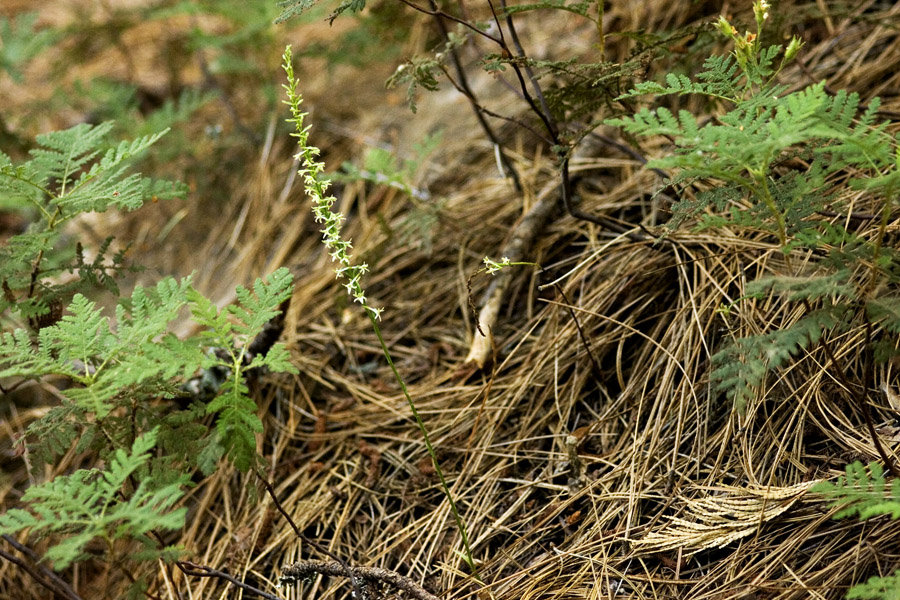Piperia
|
Family: Orchidaceae |
Herbs, perennial, terrestrial, glabrous. Roots few, fleshy; tuberoids ellipsoid-ovoid. Stems simple. Leaves ephemeral, 2-6, basal; blade sessile, lanceolate to oblanceolate; cauline bracts ovate to linear-lanceolate. Inflorescences many-flowered racemes or spicate racemes. Flowers resupinate, white, yellow-green to green, nearly sessile; sepals 1-3-veined; lateral sepals similar, adnate to lip and slightly longer than free dorsal sepal; lip base adnate to column, blade simple, midrib thickened, broad; spur clavate to filiform; column short, auricles absent; anther 1, erect, connective narrow, cells close and parallel; pollinaria 2; pollinia 2, sectile; caudicles inconspicuous, attached to round to oblong viscidia; stigmas confluent, concave; rostellum 3-lobed. Fruits capsules, erect, nearly sessile, ellipsoid to sausage-shaped. x = 21. Piperia is perhaps the most taxonomically complex orchid genus in North America. Considerable variation occurs within most species, and distinctions among taxa are often subtle. In pressed, dried specimens important characteristics that otherwise may be obvious in the field are frequently obscured. Our views on the taxonomy of the genus evolved as more extensive field and garden studies have helped us interpret geographic patterns of variation and recognize additional unifying or distinguishing characteristics. Leaf, bract, and floral measurements in the following descriptions represent the largest dimensions on a given plant.
|

